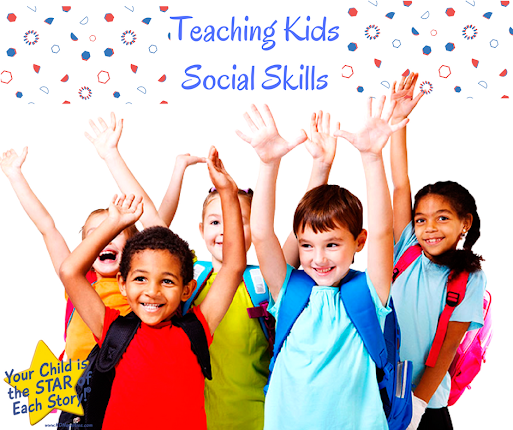Teaching Social Skills in the Classroom - Presented by : Merlissa McFarlane
PART ONE -
DEFINING SOCIAL SKILLS
Social Skills are skills that children use to communicate and interact with each other. Social Skills can be verbal and non-verbal, gestures, body language and physical appearance. Social skills should be appropriate to the situation of communication and be under the cognitive control of the learners.
At all levels of development, social skills can be taught, practiced and learned for effective and meaningful social interactions.
Social Skills can be classified into four sub-divisions. They are;
* Survival - Listening and Following directions
* Interpersonal - Empathy and Politeness
* Problem Solving - Accepting responsibility and Decision -making
* Conflict Resolution - Dealing with peer- pressure
* Survival - Listening and Following directions
* Interpersonal - Empathy and Politeness
* Problem Solving - Accepting responsibility and Decision -making
* Conflict Resolution - Dealing with peer- pressure
PART THREE -
IMPORTANCE OF SOCIAL SKILLS
Good social skills have numerous benefits and are more meaningful to children when they are exposed to it from an early age.
1) Social Skills allow children to treat each other with respect, honesty and kindness.
2) Social skills also help prepare learners for future success.
3) Social skills promote good cooperation skills among leaners.
4) Social Skills encourage the development of listening skills for healthy communication among peers. Students learn to listen to their teachers and other authority figures.
5) Social Skills helps learners to understand that it is important to respect each other's personal space.
6) Good eye contact is also an important communication skill needed for social interactions. Eye contact helps the child to focus on who he or she is talking to and on who is doing the speaking. This communicates interest in the conversation that is taking place.
7) Using kind words such as please, thank you and excuse me are necessary for oral communication among peers and to those in authority.
PART FOUR
VIDEO PORTFOLIO
1) Expected and Unexpected Behaviour -
This video illustrates the fact that words are powerful. It therefore encourages children to carefully consider their words before speaking to avoid deliberately hurting each other.
It first illustrates how one student's quick verbal expression hurt someone who had given her a gift. The second part explains that one should think of the importance and effect of the words that they are about to speak before verbalizing them in order to hurting someone who did not mean us any harm.
https://www.youtube.com/watch?v=NLm2BuW73m4
2) Self Regulation - This video mirrors the negative and positive responses of how to deal with conflict when playing with peers. It helps the learners to understand that it is important to resolve a problem quickly for the purpose of the game or activity. It is necessary to take the responsibility of our own actions especially when others have pointed out our wrong.
3) Calming Strategies - This video provides techniques that children can use to calm themselves when angry and frustrated. These strategies are effective because they help the child to take responsibility of their behaviour in the situation. It helps the child to understand that he or she can make positive choices to channel their feelings and responses to the situation.
4) Listening is an important component of social skills. It is important to develop and maintain healthy communication among peers.
This video show the correct and the incorrect method of listening and communicating with each other.
PART FIVE
WRAP IT UP
Social skills development are just as important to learners as the development of language arts and mathematics skills. They are needed for the holistic development of the child and should be taught and modeled to them at the earliest age.
As social beings children need to understand that there will be disagreements, misunderstandings and possibly conflicts in their interactions with each other. Although some of these misunderstandings are unavoidable; an awareness and implementation of the techniques associated with social skills development can help teachers and students better manage social conflict in and out of the classroom.
The techniques outlined can be used as part of the classroom's and school's management plan to bring awareness of good and acceptable social behaviour among students. Educators can make deliberate attempts to encourage students to practice common courteous, problem solving and conflict resolution by integrating these social skills into their classroom rules, routines and procedures.
The video illustrations can also be used in the classroom to purposefully tackle cases of social misconducts among students and help them resolve their issues for the benefit of all those involved.














Comments
Post a Comment